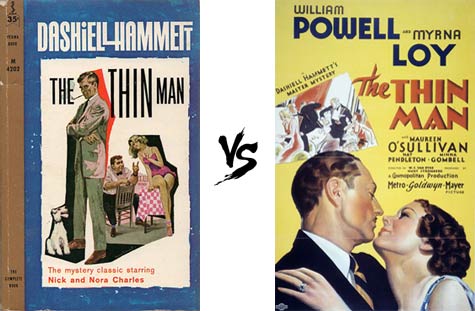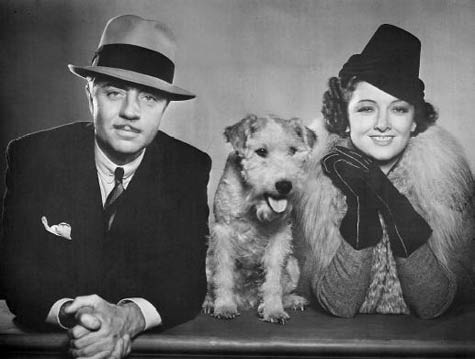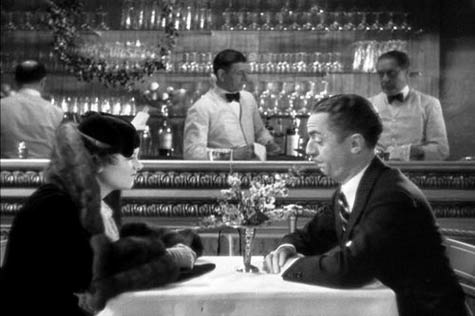
The movie version of The Thin Man (1934), written by Albert Hackett and Frances Goodrich and directed by W.S. Van Dyke, is one of my all-time favorite movies. What’s not to love? William Powell and Myrna Loy are at their best. Asta the dog is cute. There’s wise-cracking dialogue, great clothes and a twisty murder-mystery to solve. It is one of the early influences on my love of all things mystery.
When I watched it again recently, maybe for the thirtieth time, I realized I had never read the book. Never read anything by Dashiell Hammett come to think of it. How could I call myself a mystery lover with this gaping hole in my reading history?
I set out to fill that void immediately. I wouldn’t be able to hold my head up around my mystery writer friends until I did. Besides, books are always better than the movie version, right? I knew I was in for a treat.
Well, maybe not so much.
Hammett’s novel is well-written. The main plot is the same. Wise-cracking former private detective is reluctantly drawn into a murder investigation by the daughter of the missing main suspect. Pretty, rich wife of said detective eggs him on while cracking wise herself. The twists and turns are almost the same as the movie. So why wasn’t I as enamored with this version?
It felt kinda blah to me.
There is a big lack of description. People get a basic size, shape and, perhaps, coloring. But the settings are left to the imagination. I'll confess I can deal with a level of description most of my friends call excessive. But Hammett didn't give me even a cursory glance at a room. He describes one dwelling, and it's a fighting couple’s messy apartment. Even the speakeasies are shells. One has tables crowded together. But is that in a cavernous place, or a hole in the wall? How big was the hotel suite Nick and Nora occupied? Was the Jorgenson apartment tasteful or tacky? Not a clue. Of course you can see them all in the movie.

Hammett is known for his nourish stories of hard-boiled detectives. Noir does have some humor to it. Usually dark humor. The humor doesn’t come through in the book. The movie tips way to the funny side. I wouldn’t even consider it noir at all. There are a couple suspenseful moments, but it's mainly light-hearted. As light-hearted as a story about murder can be. The book’s situations are much darker.
Darker situations? Doesn’t that make it more exciting? Not for me. It’s hinted that a stepfather sexually assaulted his stepdaughter. That’s plain old creepy, not exciting. A couple throwing dishes at each other and threatening worse is disturbing, as is the habit the police detectives have of roughing up suspects to get information.
Most of the women are considered stupid, crazy and/or liars. Racism is blatant. Even Nora keeps calling Nick a “lying Greek”.

I realize the book was written in the 1930s and, unfortunately, that's the way it was. A lot of the movies from the same time have a similar problem. The battling couple is in the movie as well—also played for laughs. But there are more appropriate moments for laughter in the movie, and that makes it a better entertainment experience. At least for me.
It all may just be a case of loving the movie too much. I guess I was looking for the book to be more like a movie treatment. Would I feel differently if I had read the book first? Possibly. But I don’t think my mother would have let a six-year-old me read it. She wouldn’t have read it to me either. But I got to watch the movie any time they showed it on television.
I don’t think it was a bad influence.
Debbie Meldrum reads just about everything she can get her hands on. She was the short fiction editor for Apollo's Lyre and the Editor in Chief of the Pikes Peak Writers NewsMag. She's currently putting the finishing touches on her first novel.
